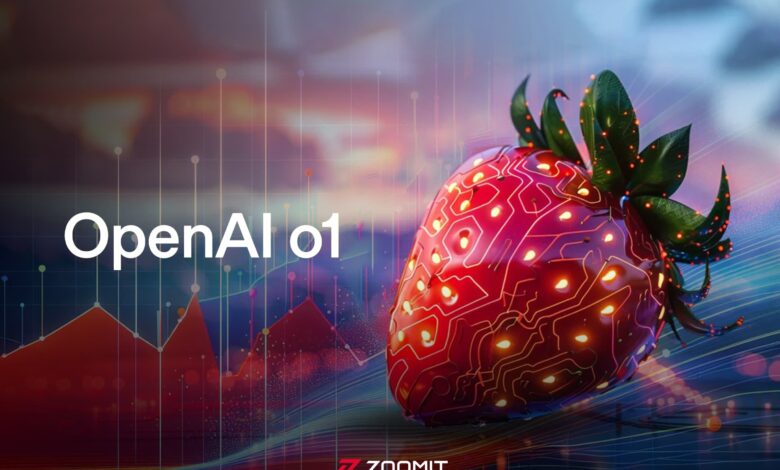From “T” to “Y” of the strawberry project; The most amazing OpenAI artificial intelligence model

To deal with the computational challenges caused by the larger model, “Strawberry” may use sparse attention mechanisms. These mechanisms allow the model to focus only on relevant and important parts of the input data without sacrificing performance, thus reducing the computational burden.
Reasoning and cognitive abilities
One of the prominent features of the “strawberry” model is its advanced reasoning and problem solving abilities, which require deep changes in the way information is processed by the model. The development of the “Strawberry” model involves a process known as the Star Method (Self-Taught Reasoner or STaR for short).
This method helps in creating a structured approach to problem solving to understand and respond to complex problems in new ways, such as scenario-based learning, task automation or reasoning frameworks. This method may play a key role in overcoming the limitations of previous AI models.
The star method helps artificial intelligence to respond to different problems more flexibly
The Star Method (STaR) starts with a small set of examples that illustrate step-by-step reasoning (called “reasons”). It then prompts the large linguistic model to generate “reasons” for larger datasets of questions that have no answers (or reasons).

Photographer: Eric Zelikman et al / arxiv.org/pdf/2203.14465v2
During this process, first some solved examples are presented to the model and then the model is asked to solve similar problems by itself this time. This method is called “Bootstrapping”, which here means improving the model’s capabilities by relying on itself.
This process uses the reasoning abilities in the language model and improves them through repetition. The process is as follows:
- Producing reasons: The star method begins by training a large linguistic model with a small set of examples that demonstrate step-by-step reasoning, and after training, prompts the model to generate reasons for a larger dataset of new questions.
- Filtering: The model checks whether the generated reasons lead to the correct answer or not. Only reasons that reach the correct answer are retained.
- Improvement and retraining: The model is retrained using this filtered set of successfully generated questions and reasons. This process strengthens the model’s ability to generate appropriate reasons.
- Repeat process: The training and testing process is repeated regularly. The improved model uses the previous step again to generate reasons for the same larger set of questions. This iterative process allows the model to learn from the arguments it generates and improve its performance over time.
- justification (optional): introduces a “justification” to overcome the limitation of learning only from initial successful reasons. For questions that the model answered incorrectly, the correct answer is provided as a guide and the model is asked to generate a reason justifying this answer. This helps the model learn from its mistakes and improve its reasoning when faced with more complex problems.
These reasoning methods are inspired by human cognitive processes and allow the model to solve problems in a more structured and human-like manner. In previous models, more emphasis was placed on special expertise in specific tasks, but the star method can lead to the development of more general reasoning. Using this method, OpenAI aims to build a model that can solve a wider range of tasks more effectively.
For example:
In a complex legal question, “Strawberry” can make a logical conclusion by examining several legal precedents and possibly reach a conclusion that is legally valid.
or
In a strategic business scenario, this model can analyze the advantages and disadvantages of different business decisions and provide a more reasonable recommendation.
Memory and context awareness
One of the key technical advances in the “strawberry” model is the ability to maintain long-term memory and contextual understanding in long conversations or interactions. This feature is critical to improving the user experience, and its importance is especially pronounced in multi-phase conversations (to keep the topic on track during long sessions).
Current models suffer from two types of forgetfulness: one during long conversations and the other between individual chats.
- Extended memory capacity: Previous models were capable of maintaining context in shorter conversations, but when the conversation spanned multiple exchanges or different topics, they typically had trouble forgetting. The “strawberry” model is designed to more effectively remember and integrate previous interactions, so that users don’t need to repeat information and conversations continue naturally and smoothly.
- Hierarchical memory mechanism: Strawberry may use a hierarchical memory system that allows it to prioritize and retain the most important pieces of information over time. This mechanism allows the model to selectively store key details of a conversation and recall them when needed, without getting bogged down in less important data.
Educational data and knowledge base
Similar to previous models, Strawberry is trained on a large and diverse set of data, possibly with a more extensive and recent dataset. This extensive training allows the model to take advantage of extensive knowledge and ensures that its answers remain accurate and up-to-date.
The “strawberry” model may have the necessary capabilities to increase its knowledge over time
While the details of Strawberry’s learning abilities have not been fully revealed, the model may include mechanisms for continuous learning. This means that the model will be periodically updated with new information after release. This feature allows the model to always remain updated and functional.
Applications and speculations for the future of strawberry
The new “Strawberry” model from OpenAI opens new doors to a wide range of exciting applications in different industries. With advanced reasoning and multi-processing capabilities, this model can perform more complex tasks with greater precision, revolutionizing the way artificial intelligence is used in sectors such as healthcare, education, business, creative industries and even more. .
Although many of these applications are still in their early and theoretical stages, improvements to Strawberry show that the model will have far-reaching implications for current and emerging technologies. In the following, we will discuss some potential applications and predictions about the “strawberry” model.
Treatment and medical research
One of the promising applications of the “strawberry” model is in the field of healthcare and medical research. The advanced reasoning and multiprocessing capabilities of the Strawberry model make it an ideal choice to help diagnose diseases, analyze medical images, and design personalized treatment plans.
“Strawberry” can identify early signs of diseases such as cancer or cardiovascular problems
- Medical diagnosis: The “strawberry” model can help healthcare professionals diagnose diseases more accurately by analyzing large data sets including medical records, laboratory results, and patient histories. Its advanced inference capabilities allow it to detect patterns that may be missed by traditional diagnostic methods or even older AI models. For example, this model can identify early signs of diseases such as cancer or cardiovascular problems based on complex data.









